-
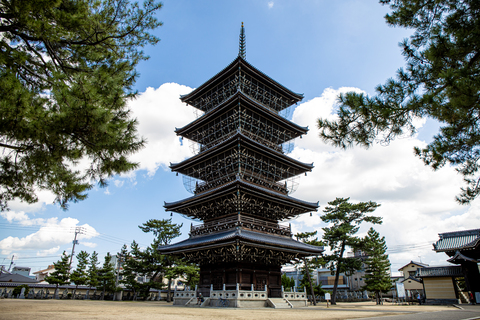
1Zentsuji Temple
Zentsuji is a temple of the Shingon school of Buddhism. It traces its history back to the year 807, when Kukai (774–835), the founder of the Shingon school and the son of a local aristocrat, restored his family’s ancestral temple and renamed it Zentsuji. An expansive complex, Zentsuji now consists of two adjacent sanctuaries: To-in or the Eastern Precinct, which Kukai founded, and Sai-in, the Western Precinct, which stands on the site of Kukai’s birthplace and was a separate temple until the late nineteenth century.
The Kondo or Golden Hall at To-in is Zentsuji’s main hall and houses a wooden statue of Yakushi (the Buddha of medicine and healing), the principal deity of the temple. Worship of the Yakushi Buddha has long been prevalent in Japan, both in Shikoku and elsewhere, because this Buddha is believed to help relieve suffering in this life rather than in the next. The current Golden Hall and its statue date back to the years 1699 and 1700 respectively; the originals were lost in a fire in 1558. Other noteworthy buildings at To-in include a five-story pagoda assembled story by story over a period of 60 years, and the temple’s main South Gate, a monumental structure erected to commemorate Japan’s victory in the Russo-Japanese War of 1904–1905. Nearby stand two majestic camphor trees, which are more than a thousand years old and are said to have towered over the temple grounds since the days of Kukai.
The grounds of Sai-in are somewhat less spacious than those of its neighbor but are revered by pilgrims who come to pay their respects at the Mieido Hall. Built on the site where Kukai was born, this ornate building enshrines the grand master of the Shingon school as a deity.More details
-
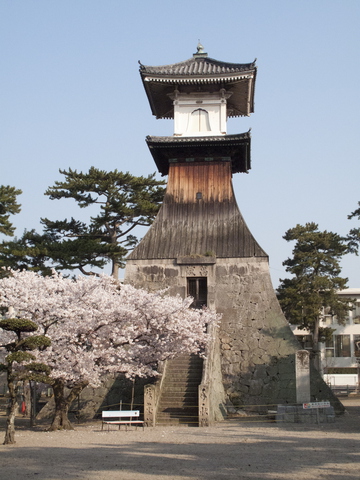
2Takatoro Lantern
Takatoro Lantern in Kotohira is a tower-like structure built on a tall, pyramid-shaped foundation. Takatoro literally means “tall lantern” and comes from the word toro, which is a traditional lantern that is typically found in Buddhist temples and Shinto shrines.
Takatoro Lantern is located just three minutes on foot from JR Kotohira Station, making it easily accessible for tourists arriving from Takamatsu. It is the sightseeing spot every visitor to Kotohira should see first.
Takatoro Lantern has been designated an Important Tangible Folk Cultural Property of Japan related to the popular beliefs centered around Konpira, a syncretic deity known as the guardian of sailors. It is located near Kotohiragu Shrine, a Shinto sanctuary that is dedicated to Konpira and attracts thousands of visitors every year.
The three-story structure of Takatoro Lantern was completed in 1860, reaching 27 meters in height and thus becoming the tallest wooden lantern in the country. It was originally designed as a lighthouse for sailors in the Seto Inland Sea, who also used it as a landmark to offer their prayers to Konpira.More details
-
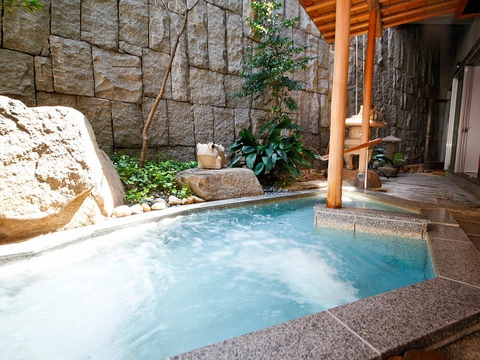
3Enjoying Kagawa’s Wonderful Onsen
Since the Edo period, Kotohira has been known for providing accommodations for pilgrims visiting the nearby shrines and temples. Korin Chikakane used to operate a hotel in Kotohira, but in 1997 he created a hot spring resort by digging a well, tapping into this area’s natural hot springs to supply the naturally hot water to local hotels. There are now sixteen inns in the Kotohira Hot Springs area that use this water, stretching from the banks of the Kanakuragawa to the area near Konpira Shrine. Bathers have a choice of a variety of waters. Some of the baths are rich in sodium and calcium salts, while others have table salt and carbonic acid, or mild radioactivity. Some are effective against neuralgia, while others are good for gout. Pick the bath that is best for you! The Kotohira Hot Springs Festival takes place once a year.
More details
-
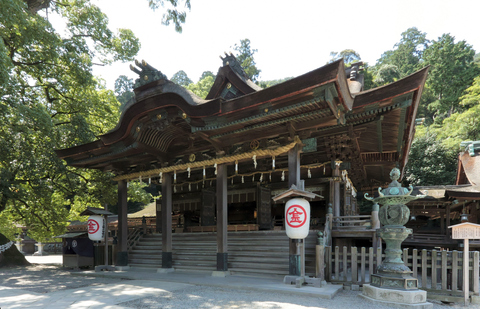
4Kotohiragu Shrine
In the Edo period, Kotohiragu Shrine was an alluring destination many people wanted to travel to at least once in their lives. It has preserved its charm to this day as one of the most frequently visited spots in Kagawa Prefecture.
To get to the main shrine, you have to climb 785 stone steps, which takes about 30 minutes one way. The path is lined with numerous shops, restaurants, and traditional inns (ryokan). At the main shrine, there is a path that will take you up an additional 583 stone steps to the inner shrine. About half of all visitors end their journey after beating the initial 785 steps, but you can go all the way and complete the 1368-step pilgrimage if you feel up to the challenge.
On the way to the main shrine, you will walk past the treasure house (homotsukan), which houses many historical artifacts and works of art. Next, there is the Takahashi Yuichi Museum with an exhibition of works by Takahashi Yuichi, a realist painter from the 19th century. Further up, you will find the study (omoteshoin) where the sliding doors and walls are adorned with paintings by a famous 17th-century artist named Maruyama Okyo. You can take a break at the Kamitsubaki Café and Restaurant, located near the study. Go a little further to get to Asahi Shrine, which is decorated with intricate ornaments depicting clouds, humans, animals, plants, and various objects. Both the study and Asahi Shrine have been designated Important Cultural Properties of Japan.
In front of the Takahashi Yuichi Museum, there is a bronze dog statue of a konpira inu. The word konpira comes from the expression konpira-san, which is a nickname for Kotohiragu Shrine, and the word inu means dog. In the Edo period, ordinary citizens were not allowed to travel, except for visits to shrines and temples. For some people in eastern Japan, the journey to Kotohiragu Shrine often proved too challenging, so they asked their well-traveled acquaintances to take their offerings to the shrine on their behalf. Some people even entrusted their dogs with the task, and the dogs were then looked after by other pilgrims to make sure they made it to the final destination safely.More details
-
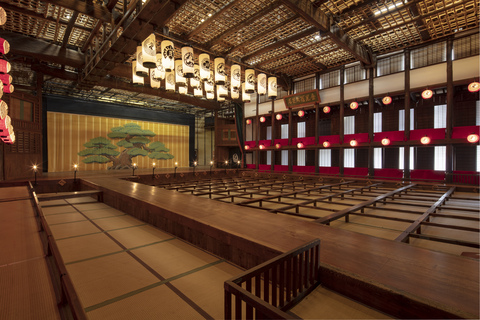
5Kanamaruza (formerly Konpira Oshibai)
Built in 1835, Kanamaruza is Japan’s oldest surviving complete kabuki theater. Konpira Daigongen (now known as Konpira san and Konpira Shrine) became a site of national pilgrimage in the middle of the Edo period (eighteenth century), drawing visitors to Kotohira from all over Japan. Kabuki and other forms of entertainment had been provided for these pilgrims several times a year in a temporary playhouse. As the town developed and expanded at the base of the shrine, Konpira Oshibai was constructed as a permanent kabuki theater to entertain the pilgrims. Renamed Kanamaruza around 1900, it has been known affectionately by that name ever since.
Kanamaruza was registered as an Important Cultural Property in 1970. Over a four-year period beginning in 1972, it was dismantled and reconstructed in its present location. In 2003, restoration work was begun and the theater was restored to its original Edo-period state.
In 1984, the theater attracted the attention of the professional kabuki world. Three famous actors, Nakamura Kichiemon II, Sawamura Tojuro II, and Nakamura Kankuro V, visited Kanamaruza to produce a TV program about it, which made it well known throughout Japan. They were fascinated by the theater’s unique atmosphere and traditional design, and thus the idea to hold regular performances there was born. In late June 1985, a kabuki troupe led by Kichiemon staged the play Saikai Zakura Misome no Kiyomizu (Reunion Among the Cherry Blossoms After the First Meeting at Kiyomizu) and the dance drama Niwaka Jishi (Spirited Lion) at the Kanamaruza.
Since 1985, annual kabuki performances called the Shikoku Konpira Kabuki Oshibai have been held in the month of April or May, an event that marks the arrival of spring to Shikoku island. First-rank kabuki actors come to perform, and the audience can relish kabuki in the compact size of theater for which it was originally designed, allowing close proximity to the stage and hanamachi, and a marvelous sense of intimacy with the players.More details
-
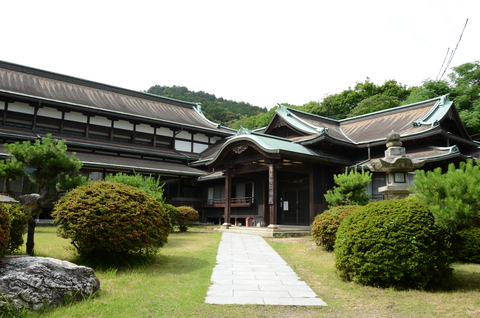
6Kotohira Town Public Hall
The Kotohira-cho Public Hall, constructed in 1934, is built in the traditional Japanese architectural style of irimoya, a style common in many East Asian countries. This style features a roof that slopes down on all four sides with a gable that is integrated on two opposing sides. It is usually constructed with two large sloping roof sections in the front and back respectively, while each of the two sides is normally constructed with a smaller roof section. This style is still in wide use in Buddhist temples and Shinto shrines in Japan, and also in palaces, castles, and residential dwellings. In the case of dwellings for common people, as in this case, the style is called moya-zukuri.
The earliest examples of this style can be found in Jomon-period architecture (approx. 14,000–300 BCE), and it is employed in many of the famous buildings of Japan. The gables that stretch out over the sides of the building are the most recognizable feature of this architectural style.
The Kotohira-cho Public Hall is a wooden structure, featuring a massive gabled roof with shingles, an entryway wing for VIPs, and a main wing with Japanese-style rooms. The beautiful wood-shingled roof has an ancient history in Japan dating back to the seventh century. The hall includes a large theater space that can accommodate three hundred guests. Concerts and other community events are held on a regular basis here and in the garden, where one can also enjoy the changing scenery of the four seasons.More details
-
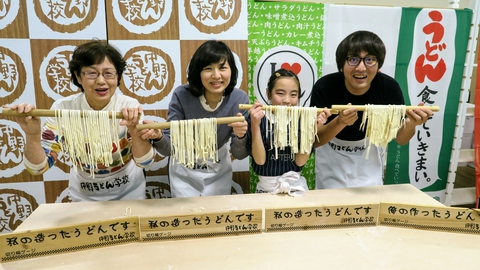
7Nakano Udon School in Kagawa Japan
Let’s Make Sanuki udon
Making udon is a truly fun experience, and you will be surprised at how simple udon is to make. In Kagawa Prefecture, there are many places that provide lessons. You will learn everything from the amount of wheat flour you will need to make udon for five people to the correct ratios of salt and water for each season—the most salt is required in summer and the least in winter.
After learning the ingredients, you are ready to start making your first batch of udon. You will have fun mixing the ingredients, and then flattening them with your feet to music, letting the dough rest, and finally rolling it and cutting it into long thin strips.
And at the end of your experience, the udon you made will be cooked and served to you so can taste your own homemade udon. Finally you get a package of your own homemade dough to bring home for your loved ones.More details
-
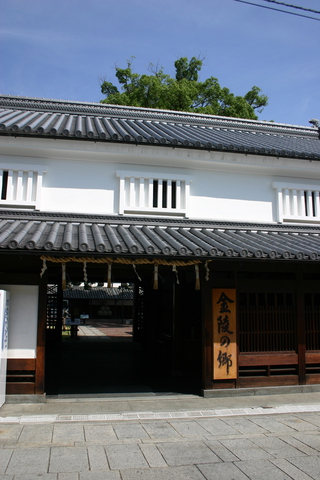
8Kinryo no Sato
The origin of Seishu Kinryo sake dates to 1616. In that period there were several sake makers. One of these was Tsuruhaya, followed by Haneya who changed the name of the sake to Tsurutaya. The sake stock of this sake maker was later bought by the eighth generation Nishino Kaemon in 1789, at the end of Edo era. This was the birth of the refined sake, Kinryo.
There were three sake storage houses in the Kotohira headquarters. One of the storage houses is called Dainiko (second storage house), which faces the main street. It is approximately 2,916 square meters, and this was opened as Kinryo no Sato in 1988. At the entrance to the building is a sugidama, a ball made from sprigs of Japanese cedar, traditionally hung in the eaves of sake breweries to indicate that sake has been freshly brewed.
This traditional storage house contains the original white walls of the brewing company when it was established. Visitors to Kinryo no Sato can learn about the original sake production and see old sake-making tools and scenes that depict the sake-making process, while enjoying the audiovisual information provided.
We hope that you will learn about Japanese sake culture and encounter a refined sake in a relaxed atmosphere. Please enjoy tasting the sake, too, and having a relaxing rest under the shade of a 900-year-old sacred camphor tree.More details
-
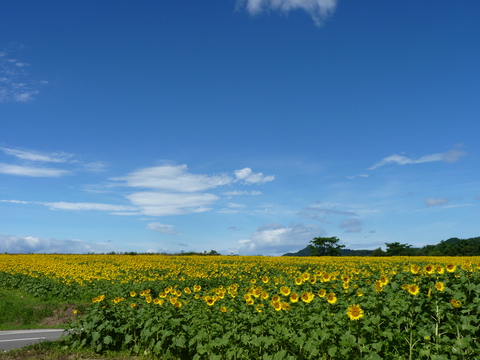
9The Sunflowers of Manno
The town of Manno is located in southwestern Kagawa, near the prefectural border with Tokushima. Sunflowers have been cultivated here since 1989, when they were first planted in fallow rice fields. Though the town has a population of less than 20,000, its 1.2 million sunflowers draw in far more visitors than that every summer. The seas of yellow flowers come into full bloom in July, which is also when the town holds the Himawari (Sunflower) Festival to celebrate them. Aside from being pleasant to look at, the sunflowers are a valuable resource for the town. Sunflower seeds are now being pressed for oil at a local factory, which opened in 2018 in a building previously used as an elementary school. The factory, which handles the entire production process from pressing to bottling, uses only sunflower seeds grown in Manno. The oil is extracted using a low-temperature pressing process that retains the nutrients in the seeds, resulting in an additive- and preservative-free product noted for its high oleic acid content. Manno sunflower oil is also used as the main ingredient in salad dressing, whereas some of the oil-cake (what remains of the seeds after oil has been extracted) is used as feed for a local strain of cattle called “sunflower beef.”
More details
-

10Manno Reservoir / Manno Park
The Manno Reservoir is both a historical curiosity and an indispensable source of water for many farmers in modern-day Kagawa. About 20 kilometers in circumference, the reservoir helps irrigate some 3,000 hectares of farmland, continuing a centuries-old practice.
Kagawa’s low annual rainfall has meant that farmers have had to contend with repeated droughts and a general lack of fresh water as long as agriculture has been practiced in the region. The first reservoir at Manno was built in the early eighth century by the governor of Sanuki province (present-day Kagawa Prefecture), who had a dam constructed on the Kanakura River to ensure a stable supply of water to the rice paddies downstream. The dam burst in the year 818, but was rebuilt three years later by Sanuki’s most famous son: the Buddhist priest Kukai (774–835), who had studied both esoteric Buddhism and advanced engineering in China. Kukai employed techniques never used before in Japan to construct an arched dam just upstream of the narrowest part of the river valley.
Although the remains of Kukai’s dam are no longer visible in the reservoir, which has been reinforced and deepened several times over the centuries, the site itself is worth a visit for its natural beauty. More than 3,000 cherry trees turn the hillsides pink in spring, while in autumn the woods turn to brilliant shades of yellow and red. The biggest event at Manno Reservoir takes place on June 15, the date that marks both Kukai’s birthday and the start of the summer water releases. The reservoir’s gates are opened to flood the region’s rice paddies, preparing them for planting season.More details
-
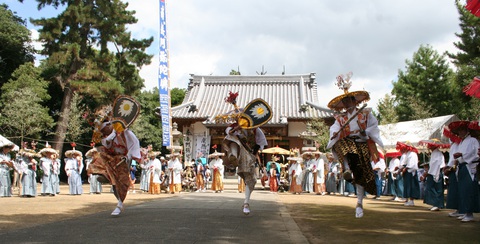
11Takinomiya Nenbutsu Odori
Nenbutsu Odori (“Buddhist prayer dance”) is a performance art and ritual associated with the town of Ayagawa. It is performed annually on August 25 at two Shinto shrines: Takinomiya Shrine and Takinomiya Tenmangu. A designated Important Intangible Folk Cultural Property, the dance is said to date back more than a thousand years.
Legend states that in the year 889, the Sanuki region (present-day Kagawa Prefecture) was in the throes of an unprecedented drought. Seeking to end the suffering, Sugawara no Michizane (845–903), the governor of Sanuki, fasted and prayed for seven days and seven nights. The heavens answered his pleas: rain finally came, and the overjoyed people danced wildly at Takinomiya Shrine. This is considered the origin of a dancing ritual performed locally to thank Michizane and appeal for a plentiful harvest. The simultaneous prayer to Buddha was added some 300 years later by the religious reformer Honen (1133–1212), and so the Nenbutsu Odori was born.
Every August 25, three of the 11 dance groups active in Ayagawa gather at Takinomiya Shrine to perform the Nenbutsu Odori. They then parade to the nearby Takinomiya Tenmangu for one more performance. Another three groups perform the next year and so on. Once every five years, all 11 troupes perform together as part of the So-odori. The next So-odori is scheduled for 2023. The Nenbutsu Odori is an energetic, colorful affair in which the dancers wear elaborate costumes and local children participate by playing drums.More details
-
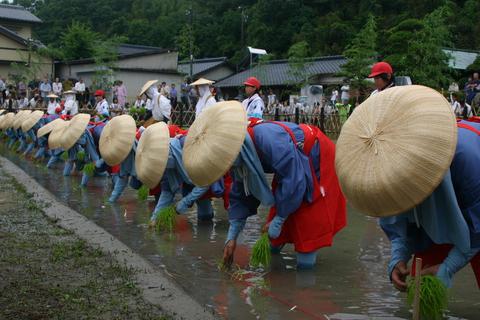
12Sukisaiden Sacred Rice
The numerous ceremonies that accompany a Japanese emperor’s ascension to the throne are complex and intricate. Among the most significant is the Daijosai, a solemn Shinto thanksgiving rite in which the emperor offers newly harvested rice and other items to his imperial ancestors and the deities of heaven and earth, thereby ensuring that the gods look kindly upon the new reign. Since the seventh century, the rice used in the Daijosai has come from two fields, one each in the eastern and western parts of the country. The selection of these two fields is determined through a turtle-shell divination rite that indicates the general direction in which each field is to be located in relation to the capital. In 1914, upon the coronation of Emperor Taisho (1879–1926), the oracle bones pointed to Kagawa, where a field in what is now the town of Ayagawa was chosen to provide the sacred rice from western Japan.
The imperial rice was planted in May 1915 in preparation for the Daijosai, held in November of the same year. The elaborate planting ceremony, in which the local people wore colorful costumes, performed a dance, and sang a song written for the occasion, has been reenacted in Ayagawa every June since 1986. This Sukisaiden Festival takes place next to the paddies where the Daijosai rice was grown in 1915 and is performed by local schoolchildren, including students from a school founded to commemorate the great honor the court bestowed upon Ayagawa more than a century ago. The Sukisaiden Memorial Museum, about 15 minutes on foot from the rice paddies, offers a comprehensive description of the events of 1914 and 1915.More details
-
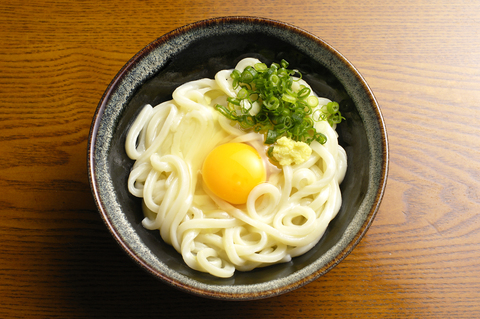
Sanuki Udon
Nowhere is udon more popular than Kagawa Prefecture, where the per-capita consumption is said to be greater than anywhere else in Japan. Kagawa is famous for its own distinct udon, known as “Sanuki udon.” Sanuki is the Edo-period name for what is now Kagawa Prefecture, and for hundreds of years udon has been a mainstay of the Kagawa diet. Since the Edo period, Kagawa has become famous for the delicious taste of its udon noodles.
Kagawa has long been famous for its udon. Several factors contributed to the making of delicious udon. Kagawa has long been famous for good-quality flour, and a rich supply of the iriko dried sardines used to make the distinctive Kagawa udon broth. Additionally, because of the low rainfall there was a vibrant salt-making industry, and salt is important ingredient in udon.
Also the island of Shodoshima has long been famous for making delicious shoyu used for the broth. A special feature of Sanuki udon comes from the pounding of the dough with one’s feet, which makes its glutinous quality even more elastic and chewy.
Throughout the year the people of Kagawa eat great quantities of udon noodle dishes, typically prepared from top-quality wheat, salt, soy sauce, and a delicious broth (dashi) made with the small dried fish known locally as iriko, (katakuchi iwashi). Kagawa Prefecture is the birthplace of self-service udon known as “self udon,” where diners decide for themselves what to add to their udon, and Kagawa is also famous for the great variety of udon dishes it serves.
Here is a list of some types of udon noodles to try:
Kake
Udon noodles with a light broth, minced scallions, and sometimes tempura flakes.
Kijoyu
Udon with just little soy sauce added. Sometimes seasoned soy sauce is used, with Japanese condiments or other flavorings added.
Bukkake
One of the most distinctive of Kagawa udon dishes, it is served with a smaller amount of heavier broth.
Yudame
In yudame udon, the noodles are cooked until they are done, then quenched in cold water, and then heated once more. The diner dips the noodles in broth before eating.
Shippoku
This is udon in a sweetened broth with meat or perhaps also vegetables. Home cooks generally add taro (sato-imo), carrots, Japanese radish (daikon), or fried tofu, while in restaurants it is often served with tempura or chikuwa fish paste.
Kama-age
This udon is eaten piping hot, taken straight from the pot and served without rinsing. It tastes a little undercooked and has a slightly sticky texture.
Kama-tama
For this dish, egg, broth, Japanese condiments and perhaps soy sauce are added to kama-age in a bowl.More details
